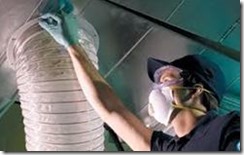
Why does Indoor Air Quality matter?
The Environmental Protection Agency lists poor indoor air quality as one of the top five environmental risks to public health. Poor indoor air quality can result in mold and allergens, structural rot and damage and higher utility costs.
Indoor air quality is an OSHA-recognized hazard that can negatively impact the well-being of building occupants. Poor indoor air quality can result in health issues ranging from common dust and other allergy symptoms (like watering eyes, dry skin, sore throat) to more severe health conditions over time like asthma, cancer and heart disease. According to the American Lung Association, “poor indoor air quality can cause or contribute to the development of infections, lung cancer and chronic lung diseases such as asthma. In addition it can cause headaches, dry eyes, nasal congestion, nausea and fatigue. People who already have lung disease are at greater risk.” Summer is a great time to assess and address indoor air quality to insure a healthy environment and smooth running facility.
Check HVAC units. Now is the time to clean out chiller tubes, test compressors for leaks, inspect condenser and evaporator coils and other recommended maintenance as recommended by your engineer, manufacturer and/or HVAC professionals.
* Make sure chillers are functioning at optimal levels to properly cool your facility while controlling your energy costs.
* If the unit isn’t moving the proper amount of air through the building, air ducts can build-up with externally-generated allergens and air pollutants as well as internally-generated contaminants (such as use of certain cleaning supplies and aerosol products).
* Improper temperature or humidity conditions can create damp environments that promote bacteria and mold growth.
* Change your filters and ensure they are free of debris. Dirty and worn filters increase energy costs, reduce the life of the system and contribute to dust, allergens and other air pollutants.
Deep clean carpets. When foot traffic moves over your carpeting, dust and allergens fly into the air, triggering allergies and creating dusty surfaces. Seasonal deep cleaning will remove dust, dirt, pollen and other allergens that enter your facilities through windows, doors, clothing and shoes as well as restore colors, remove stains and prolong the life of your carpeting.
Dust smarter. Microfiber mops, cloths and dusters attract and traps moisture and soil at the microbial level instead of leaving dust and dirt behind. Tests have shown that those microfiber products trap 99% of surface bacteria versus conventional cleaning materials that only captured an average of 33 percent. Microfiber cleaning products improve cleanliness, work more efficiently and are more environmentally friendly,
Refresh bathrooms. It’s the dirty, little secret – even with daily cleaning and precautions, dirt and bacteria build up over time. Deep cleaning will sanitize all restroom surfaces and fixtures, effectively removing build-up of dirt and bacteria and lessening their impact on indoor air quality.
Go green! Now is a great time to implement more green cleaning methods. Today’s environmentally-sensitive cleaning products can offer both cost-saving while maintaining a healthier, more hygienic environment that’s very environmentally friendly. Learn more about how to build a foundation for your green cleaning program.
































